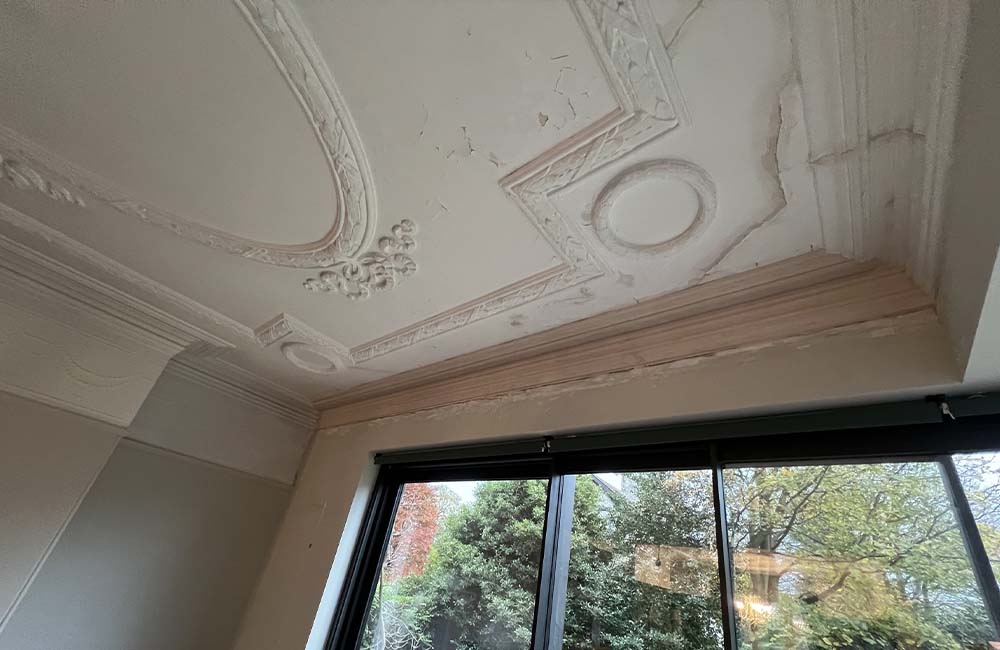blog
What Maintenance is Required for Coving and Cornice in the UK
Coving and cornice are beautiful architectural features that can add character and elegance to any home. These decorative mouldings, placed along the junction between walls and ceilings, are available in a wide range of styles, materials, and finishes. While coving and cornice can enhance the aesthetic of a room, they also require proper maintenance to ensure they remain in excellent condition for years.
Whether your coving or cornice is made of plaster, polyurethane, or MDF, knowing the right way to clean and care for it is key to prolonging its lifespan. In this blog, we will explore the types of maintenance required for coving and cornice in the UK, along with some tips on cleaning, repairing, and maintaining these beautiful features.
- Why Maintenance of Coving and Cornice is Important
Coving and cornice are exposed to dust, dirt, and moisture over time, which can cause deterioration. Regular maintenance not only helps keep your coving and cornice looking fresh but also prevents any long-term damage.
By investing in the upkeep of your coving and cornice, you can avoid costly repairs and ensure that the decorative features continue to contribute to the overall aesthetic of your home. Additionally, well-maintained coving and cornice can also increase your property’s value, as they are a sought-after feature in many traditional and modern homes across the UK.
- Basic Maintenance and Cleaning of Coving and Cornice
Cleaning is an essential part of maintaining coving and cornice. Dust and dirt can accumulate over time, especially if your coving is located in high-traffic areas or near the ceiling. Fortunately, keeping your coving and cornice clean is a simple process that can be done without much hassle.
Step 1: Dusting
Use a soft, dry cloth or a duster to remove dust from the surface of the coving or cornice. It’s best to do this regularly to prevent the build-up of dirt. If your coving has intricate details, a handheld vacuum with a soft brush attachment can help reach those hard-to-clean spots.
For cornice with ornate designs, try using a small, soft-bristled brush or even an old toothbrush to gently dislodge dust from corners and recesses.
For a more detailed clean, Coving Online recommends regular dusting to prevent a build-up of dirt, which can cause damage to the finish. Visit Coving Online for cleaning advice and other helpful tips.
Step 2: Wiping Down
Once the dust is removed, you can wipe down your coving and cornice with a damp cloth to clean off any smudges, stains, or grease. Be sure not to oversaturate the cloth to avoid damaging the material. For polyurethane or MDF coving, a slightly dampened cloth will suffice, while plaster coving may require more care to prevent moisture absorption.
For more stubborn stains, you can use a mild cleaning solution with water. Always test any cleaning solution on a small, inconspicuous area of the coving or cornice before applying it to the entire surface.
- Maintaining Different Materials of Coving and Cornice
The material your coving or cornice is made from will influence how you maintain it. Here’s a guide for maintaining each material type:
Polyurethane Coving
Polyurethane coving is lightweight, durable, and resistant to moisture, making it one of the most low-maintenance materials. Regular dusting and occasional wiping with a damp cloth should suffice to keep it clean. However, avoid using harsh chemicals or abrasive scrubbers as they can scratch the surface. Polyurethane coving can also be painted, so if the paint starts to chip, you can easily touch it up.
MDF Coving
MDF is more prone to absorbing moisture, so it’s important to keep MDF coving dry. Regular dusting and wiping with a damp cloth should prevent build-up. Be cautious with cleaning products and try to avoid soaking the material. If your MDF coving gets scuffed or marked, you can often cover the marks with paint. Regular painting will also protect the MDF coving from moisture.
Plaster Coving
Plaster coving is typically more delicate than polyurethane or MDF coving. It may crack or chip over time, especially if it is exposed to excessive moisture or impact. It’s important to avoid scrubbing plaster coving with abrasive cloths or harsh cleaning products.
If your plaster coving shows signs of wear or cracking, it may need to be repaired by a professional. For more sensitive areas, a soft, damp cloth is the best cleaning tool. Ensure that the coving is completely dry after cleaning, as moisture can damage plaster coving over time.
- Repairs and Touch-Ups for Coving and Cornice
While routine cleaning is essential for maintenance, repairs may be necessary from time to time, especially for plaster coving. Here’s how to handle common issues:
Cracks and Chips
For plaster coving, small cracks and chips can be repaired with plaster filler. If the damage is minimal, you can fill in the cracks with a smooth, even application of the filler, then sand it down once dry. After sanding, you may need to repaint the coving to restore its original look.
For polyurethane and MDF coving, cracks or damage can often be patched up with caulk or filler. Use a paintable filler for these types of coving so that the patched area can blend seamlessly with the rest of the coving.
If the damage is extensive or beyond your ability to repair, it may be worth consulting a professional installer. Coving Online offers installation services that can help you replace damaged coving. Visit Coving Online Installation for further details.
Repainting and Touch-Ups
Over time, coving and cornice may lose their luster, especially if they’ve been exposed to wear and tear. Repainting can breathe new life into your coving. If your coving is painted, give it a fresh coat every few years to keep it looking sharp. Always use high-quality paint suitable for the material of your coving or cornice.
- When to Call a Professional
While most of the coving and cornice maintenance can be done by homeowners themselves, some situations may require a professional’s expertise. If you notice extensive damage, such as large cracks, sagging, or moisture issues, it is advisable to seek professional help.
Coving Online offers professional installation and repair services to ensure your coving and cornice are restored to their original condition. If you’re unsure about the level of maintenance required, consider reaching out to their team for advice and assistance. Visit Coving Online for more details.
- Conclusion
Proper maintenance of your coving and cornice is essential to keeping them looking their best. Whether you have polyurethane coving, MDF coving, or plaster coving, regular cleaning, repairs, and touch-ups will ensure these beautiful features stay in excellent condition. By following the maintenance tips outlined in this blog, you can protect your coving and cornice from wear and tear, keeping your home looking elegant and well-maintained for years to come.
For more information on purchasing high-quality coving and cornice or to find professional installation and repair services, visit Coving Online. If you have any questions or need expert advice, don’t hesitate to reach out via the contact page.


